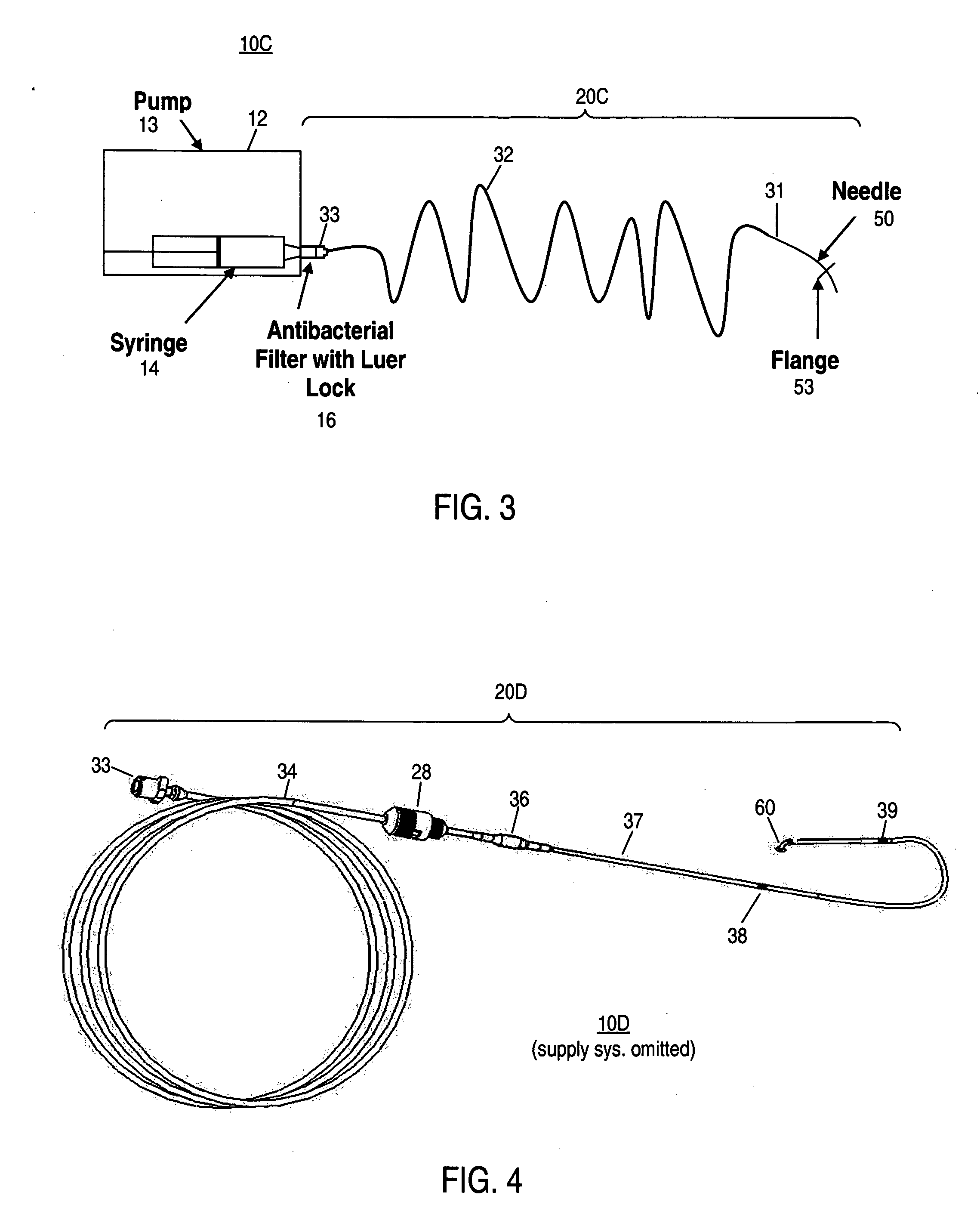Apparatus and method for delivering therapeutic and/or other agents to the inner ear and to other tissues
a technology of delivering therapeutic and/or other agents, applied in the direction of infusion syringes, drug compositions, therapy, etc., can solve the problems of difficult localized drug delivery, single dose or multiple doses cannot be delivered to tissues located in anatomically difficult areas, and the chance of side effects is much greater. to achieve the effect of convenient and sustained delivery
- Summary
- Abstract
- Description
- Claims
- Application Information
AI Technical Summary
Benefits of technology
Problems solved by technology
Method used
Image
Examples
Embodiment Construction
A. Direct Injection of Therapeutics and Other Types of Agents to the Inner Ear.
[0047] At least some embodiments of the invention provide methods of treating inner ear disorders by using devices to inject therapeutic (and other type) agents directly into the cochlea. Direct injection into the cochlea overcomes a number of disadvantages of oral and other parenteral delivery methods. For example, drugs that have provided tinnitus relief and may do so by acting directly at the underlying molecular mechanisms responsible for tinnitus, include: clonazepam, alprazolam, memantine (see U.S. Pat. No. 6,066,652), cyclandelate, caroverine (see U.S. Pat. No. 5,563,140), lidocaine, tocainide and Neurontin (gabapentin). These drugs target various receptors responsible for neuronal signal transduction in the auditory system. Unfortunately, the side effects associated with the use of these drugs, at doses effective for tinnitus control, limit their use by oral or systemic administration. See Hester ...
PUM
 Login to View More
Login to View More Abstract
Description
Claims
Application Information
 Login to View More
Login to View More - R&D
- Intellectual Property
- Life Sciences
- Materials
- Tech Scout
- Unparalleled Data Quality
- Higher Quality Content
- 60% Fewer Hallucinations
Browse by: Latest US Patents, China's latest patents, Technical Efficacy Thesaurus, Application Domain, Technology Topic, Popular Technical Reports.
© 2025 PatSnap. All rights reserved.Legal|Privacy policy|Modern Slavery Act Transparency Statement|Sitemap|About US| Contact US: help@patsnap.com



